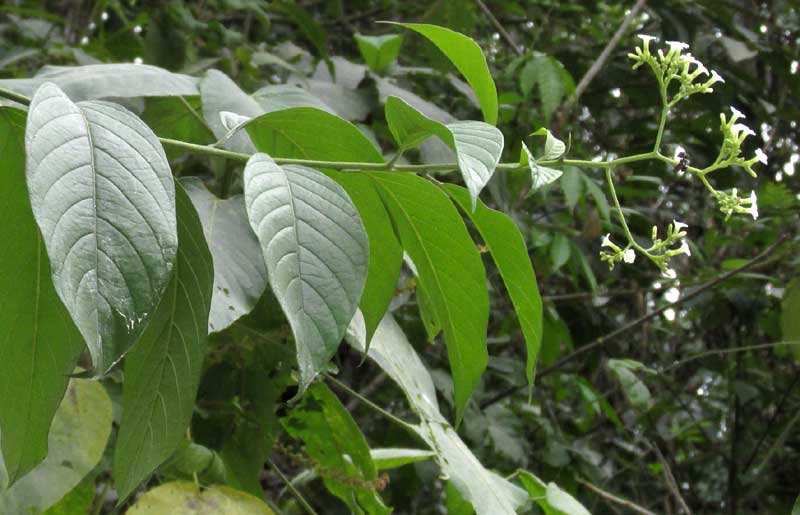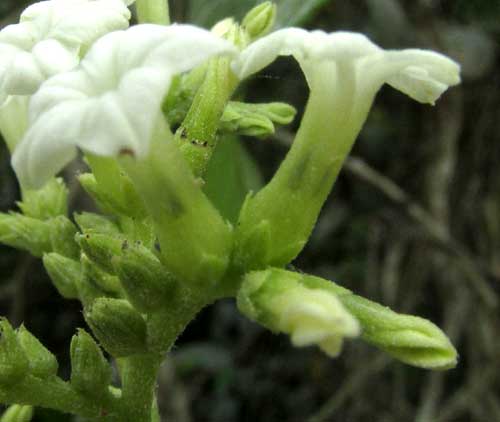Excerpts from Jim Conrad's
Naturalist Newsletter
from the May 8, 2016 Newsletter with notes from a visit in mid April to Lacanja Chansayab in the Lacandon Reserve; elevation 200m (650ft), N16.604°, W90.917°; Chiapas, MÉXICO
CHIGGERY GRAPES
On April 14th as I hiked small gravel backroads around Lacanja Chansayab in Chiapas's Lacandon Reserve, a semi-woody, shrubby vine with small, white flowers dangled from trees along the road, shown

A close-up of the flowers is below:

Along with the facts that the flowers are small, their white corollas have slightly curved tubes, the corolla lobes spiral as they unfold from the flower bud, and that the lobes show pleats down their middles, other important field marks are that the vegetative parts are covered with a mat of short, white hairs and -- maybe most diagnostic of all -- the flowers are arranged on just one side of their raceme rachises, and the rachises themselves curl at their ends. Moreover, the youngest flowers arise at the rachises' tips, with older flowers and maturing ovaries residing lower down. Such flowering structures can be called "scorpioid racemes," the word "scorpioid" meaning "scorpion-shaped," referring to the curl in a scorpion's tail.
Only a few plant families have flowers arranged in scorpioid racemes, and this was the main feature leading me to the plant's name, which is TOURNEFORTIA HIRSUTISSIMA, a good old Linneaus name. Tournefortia species belong to the Borage or Forget-Me-Not Family, the Boraginaceae. At least the US Department of Agriculture supplies the plant with the colorful English name of Chiggery Grapes. Tournefortia hirsutissima has an English name because the plant is distributed from Texas and Florida south through the Caribbean, Mexico and farther southward.
Over its large area, Chiggery Grapes is used in traditional medicine by several cultures, in various ways. One use is for treating diabetes. In fact, a paper by A. Andrade-Cetto and others appearing in a 2007 edition of the UN's FAO publication AGRIS reported that extracts from Tournefortia hirsutissima "... significantly lowered the plasma glucose levels in diabetic rats... "